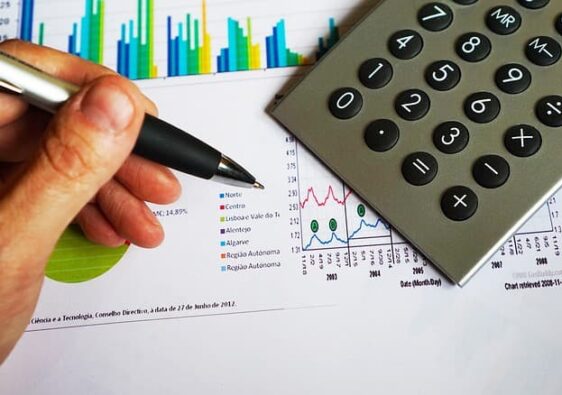Investing in and trading cryptocurrencies is impossible without the use of technical and fundamental analysis. Despite the popularity of these tools, intraday and swing traders aiming for maximum profits on every market and exchange rate movement more often turn to technical analysis (TA). We propose to examine in more detail what it represents.
How to conduct a technical analysis
Perhaps for newbies, the rules that govern technical analysis may seem too complicated at first. It is for such beginners that we have compiled this collection of basic knowledge necessary to get a more confident grasp of what technical charts, price trends and various indicators are. Of course, it is impossible to grasp the immensity in one article, but we will list the most popular technical analysis tools that are used by traders on both cryptocurrency and traditional markets. By and large, technical analysis is an analytical process that refers to anything that can be measured and attempts to systematize based on a sufficient amount of available market data. Such historical data is displayed on a technical chart.
Charts
If you are reading this, you probably have at least a general idea of what market charts look like. Nevertheless, let’s go over their basic characteristics again and those elements that are necessarily inherent in any type of technical chart, no matter what they look like. These elements include: (1) the symbol of asset and timeframe (timeframe), (2) the field for indicators, (3) the axes, displaying the price values and time period, (4) the toolbar.
The symbol of an asset is a shortened version of its name in the market: for example, BTC for bitcoin, ETH for Ethereum, GOOG for Alphabet Inc. shares, etc. A timeframe represents a time unit, which is taken as a basis for constructing a chart of price movements. For example, 1 Day (1 day) means that each bar on a given chart represents the price dynamics within a single day. By changing the duration of the time interval, the trader can “change the setting”, as if zooming in or zooming out the image. Accordingly, he can see and compare the price behavior in the short or long term. These patterns can be very different from each other. Next we see a row of indicators. We will look at them in more detail below. For now, let us just say that they are essentially algorithms, which display market data in different ways and allow the trader to try to get more information about the current trends. The price and time axis are usually located on the right and at the bottom of the chart, respectively. Their name speaks for itself. Finally, the toolbar offers the trader a whole set of tools that allow you to impose various lines and other symbols and images on the price, which can more clearly identify/evaluate the current market trend. All of these tools will allow you not only to better understand yourself, but also to clearly show others what trends you have noticed on the price chart. As a rule, any chart will offer you a huge number of settings and parameters to personalize the chosen platform to your personal needs and requirements in the most efficient way. However, none of this will matter until you understand what all of these tools are for in the first place. The answer is simple: they are all aimed at identifying and determining the current price trend.
Trends
The key objective of technical analysis is to identify trends. Two things are important: a trader needs to know what is happening in the market right now and also try to find signals and indications of what will happen to the price next, what changes are waiting for it and when it might happen. Trends can last for hours or years, which is why using timeframes of different durations is a good help. This allows you to distract from the momentary distortions and look at the situation in the longer term. There are three types of trends: rising, falling and sideways. These names explain the price behavior of each trend exhaustively – but, again, the time horizon of a particular chart must be taken into account.
There is a popular expression among members of the crypto community: “Don’t like the bitcoin chart? Take a wider view!”. This is due to the fact that if you change the scale of the VTC chart to a longer term, you can always see that the currency is moving in an uptrend. Zoom in closer and the dynamics of bitcoin over the last 2 years might make you question whether it is such a promising asset. So, it is important to always remember that besides hourly and daily charts, there are also weekly and monthly charts. However, we must not forget something else: no trend lasts forever. As technical analysts say, “a trend is your friend until it isn’t.” This is why it is so important to be able to predict the moment of a potential trend reversal – and this is what the analysis does. Of course, there is no one hundred percent guarantee for any prediction. It is only a question of the degree of probability of this or that scenario, so treat it simply as a weather forecast.
Turning Patterns
So, all traders seek to anticipate the moment of the coming trend reversal, so they always look for patterns that traditionally precede a change in market sentiment. One such pattern for many analysts is the head-and-shoulders pattern. It can appear on the chart in the background of both the upward and downward trend and become a signal of the end of the further price movement in this direction. The pattern got its name due to its characteristic appearance. In the frame of this pattern the price makes three consecutive peaks, the first and the third one (“shoulders”) look approximately equal and more modest than the second maximum (“head”). Such a model may not always look absolutely chrestomatically and symmetrically but many traders strive to find it on the price charts.
Do not forget that such a model may be formed on the chart and inverted. In this case, it may be a harbinger of completion of the downtrend and the soon transition to the growth phase. However, this is not the only way to predict the future price behavior.
Indicators
As we mentioned above, indicators are a way of passing the available market data through various algorithms. As a result, they can provide new useful information about the market trend. One of the most popular indicators is the moving average (MA). It analyzes the behavior of quotations for a certain number of days and presents the average price indicator for the period in the form of a line on the chart. As a rule, traders regard these lines as expected support or resistance areas. On the daily chart, the 50, 100 and 200-day MAs are most commonly used and are considered indications of a possible trend change. In general, an increase in price above the MA is a bullish signal, while a decline under such a line is a bearish one. Also, an additional weight to these lines gives their intersection on the long-term timeframes. Various traders use many different variations of MA as part of their own individual strategies.
Another widely used indicator for estimating the strength of the current trend and its possible reversal levels is the MACD (Moving Average Convergence Divergence). It is based on comparison of two MA moving averages (shorter and longer) superimposed on a chart and assesses the dynamics of their mutual position (convergence/divergence). As a rule, when working with this indicator you will see blue and red lines (though other colors are sometimes used), as well as bars, showing the distance between these lines. A bullish trend requires the blue line to be above the red, while a bearish trend requires it to be the other way around. Traders are most interested in the crossing of these lines, which is often a signal of a change in trend. Also, if there is significant divergence between the lines on the chart, it can indicate an overbought or oversold market. Finally, the MACD indicator can confirm the continuation of the current trend – if the lines attempt to cross, but instead bounce off each other.
Other popular trend indicators include the Relative Strength Index (RSI) and the Bollinger Bands. In any case, you should remember that none of the above-mentioned indicators is able to give you a 100% guarantee that the price will behave exactly as you expect. Indicators merely provide information which either confirms or questions some trading strategy you have developed. In addition, the use of multiple indicators will allow you to get more reliable trading signals about where the market is moving now.
Conclusions
We have reviewed only the tip of the iceberg, which is the technical analysis of the market, and considered the basic elements necessary for every beginner trader for successful and profitable trading. Nevertheless, these basic blocks will be presented on any popular trading platform. You can dive into the depths of the analysis for a long time, but there are many traders who prefer to do only the minimum set of simple tools, consisting of several indicators and trend lines. There is nothing wrong with that. After getting acquainted with the offered range, everyone is finally free to choose what he or she likes and develop his or her own strategy based on these tools.



